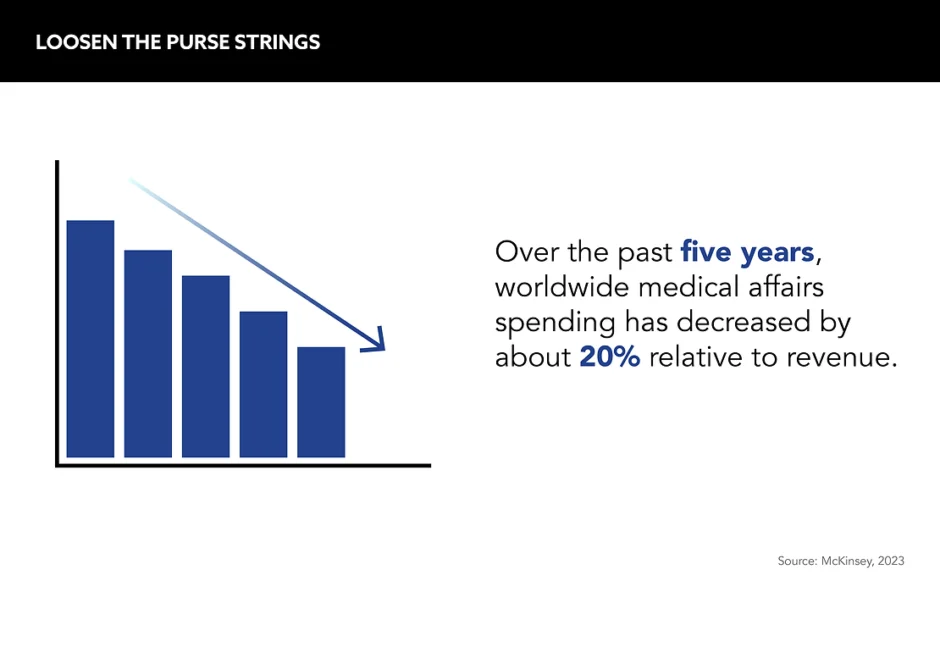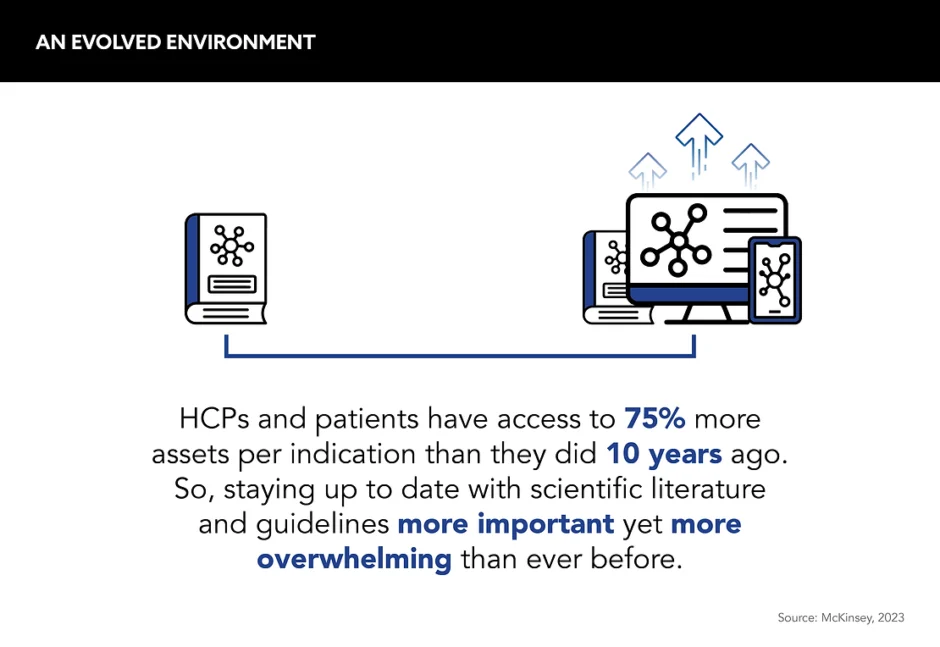The value of medical affairs is not up for debate, but are companies allocating enough time and resources to make it the strategic function it can be?
Words by Danny Buckland
Medical affairs has emerged from the swirling clouds of disruption caused by the pandemic as an influential force yet it is still striving for acceptance of its true value and impact.
Many companies have revamped their engagement strategies by reducing their sales force in favour of MSLs to communicate increasingly complex scientific information and data. However, a key challenge for the industry is how to translate MSLs’ excellence in engaging with internal and external stakeholders into measurable quantitative and qualitative metrics.
McKinsey explores this issue in its latest temperature check on the sector – A Vision for Medical Affairs 2030 – which is more tepid than its 2025 outlook, published in 2019. This report said that by 2025 medical affairs would be seen as the ‘third strategic pillar’ alongside R&D and commercial. The latest update reveals that progress towards the goal has stalled due to “capability gaps, budget constraints, organisational misalignment and competing priorities”. Not exactly the best news for the function, but is it all grey skies?

Act decisively
Despite the challenges, McKinsey believes that the industry establishing a greater role for medical affairs is still on the cards. Their message to companies that are still on the fence on whether to invest in its future? “Now is the time to act decisively.”
The new report celebrates the dynamic advances in medical affairs and, while predicting continued growth, it also highlights the urgent need to embrace digital and AI analytics to support day-to-day decision making and underscore the value and impact it delivers to HCPs and patients.
“This is a hot topic but the challenge can be overwhelming because there are all sorts of pressures on what medical affairs is and should be,” says Helen Kane, CEO, OneMSL, a training consultancy that specialises in optimising the impact and value of field medical.
“Organisations need to pause and ask what their vision is as a business, where they are today – what is working well – and then to do a diagnostic and prioritise what essentials they need to succeed,” she continues. “Critically, this will look very different from a start-up to an AstraZeneca or Novartis.”
Organisations need to pause and ask what their vision is as a business
Kane, who has 25 years’ experience in medical affairs, believes in the power of a set of guiding principles, including measures of impact, to support the achievement of medical excellence in the field.
“In the absence of clearly defined measures we are in an echo chamber of what value does medical affairs or field medical bring?” she explains. “With impact across a product’s life cycle and across functions, it is a complex area, but there is a genuine push from the sector to demonstrate impact.”
Unlock potential
The topic’s importance was recently explored by a group of senior medical leaders from more than 20 organisations brought together by OneMSL. They agreed on a set of Field Medical Impact Indicators (FMIIs) and suggestions to bring clarity to the concepts of impact and value in medical affairs.
“There has never been a better time to agree a set of practical and impact-driven measures for field-based medical teams,” the consensus report states. “With the wealth of digital information at our disposal, the key to unlocking this potential and understanding how this can empower business decisions will require enhanced analytics capabilities.”
The FMIIs include recognising factors such as the number of patient care gaps closed, increases in health equity and quality of life and patient actions such as understanding, awareness and programme adherence.
The OneMSL report also called for organisations to recognise where impacts are co-created, adding: “Medical leaders of field teams should have a much richer view of the impact and outputs being achieved by their teams than the numbers describe and should therefore be the ones telling the story of the value of their team, reserving diagnostic metrics as their troubleshooting tool.”
Marcus West, a global medical affairs performance coach, believes that fresh impetus is needed to upskill medical teams to take advantage of their broader remits. “Medical affairs compared with commercial teams are basking in their ‘moment of having arrived’. Much has been made of medical affairs becoming an established strategic pillar of every pharma company in the future… but teams, with all their varied and different roles, are being formed on the move. To say the situation is fluid would be an understatement.”

Step up to the plate
The McKinsey report emphasises the need for agility as medical affairs continues to develop alongside a younger, more tech-savvy cohort of HCPs, KOLs and patients. It further calls for investment in capabilities, enshrining a medical affairs vision into strategic planning and upgrading talent to meet commercial, organisational and regulatory roadblocks.
It is a demanding call but Kane is confident the current spotlight on medical affairs will reap rewards. “It is a volatile market but medical affairs with the help of innovative measures will be able to kick on and reach its potential,” she concludes.









